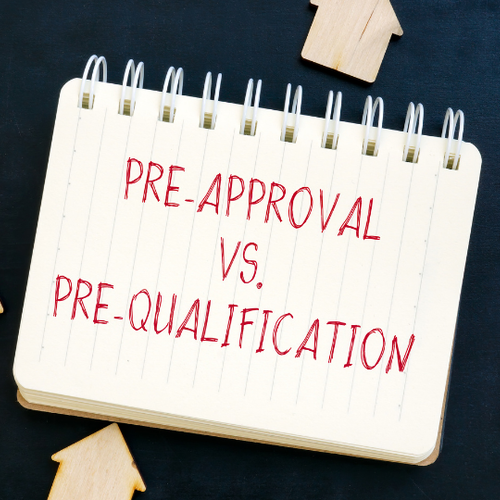Open houses can be both exciting and overwhelming for many homebuyers. On the one hand, you get a unique opportunity to view potential homes in person, explore different neighborhoods, and get a feel for what might become your future living space. On the other hand, if you don’t go in prepared, it’s easy to waste time or, worse, overlook critical details that could impact your purchasing decision. In today’s competitive real estate market, attending open houses strategically is more important than ever.
In this blog post, we’ll discuss how to maximize your time and glean the most valuable information possible during your open house visits. We’ll dive into the importance of preliminary research, what types of questions you should ask, how to interpret home staging, and why it’s crucial to keep your emotions in check while also trusting your instincts. By the end of this article, you’ll walk away with a clear plan that will help you feel confident, informed, and empowered throughout the home-buying journey.
Real estate agents often emphasize the significance of open houses, and for good reason: they offer potential buyers a convenient opportunity to walk through a property without the formality of scheduling a private viewing. More importantly, open houses allow you to experience the general vibe of the home, its layout, and its surrounding community. Whether you are a first-time buyer, moving to a new area, or looking for an upgrade (or downsize), open houses can serve as a valuable steppingstone to narrowing down your choices.
However, simply attending an open house isn’t enough—you need a plan. Much like a coach devises a game strategy for the team, you should approach open houses armed with knowledge, careful observations, and a list of must-ask questions. Taking this approach ensures that you’re making the most of your time, rather than just casually strolling through and hoping the right home will fall into your lap.
The goal of this article is to make you more purposeful in your open house visits. We’ll discuss how to do preliminary research, what questions to ask, how to evaluate a home’s condition, and other key tips for making a final decision that you won’t regret. Armed with these insights, you can turn open house visits from a casual weekend hobby into a strategic step toward securing your dream home.
Preparing for the Open House
Do Your Research
Going to an open house without any prior research is like showing up to a job interview without having read the job description. A little preparation goes a long way. Start by looking up the home online. Read through the listing details carefully: the number of bedrooms, bathrooms, square footage, listing price, and any special features mentioned. Make sure you have a copy of or access to the property’s listing page on your phone so you can review details if something seems unclear during your tour.
Beyond looking at the listing, delve into information about the neighborhood. Check out local crime rates, school ratings, average home values, and whether there are amenities like parks, shops, and grocery stores nearby. Understanding the area’s property value trends will help you gauge whether the listing price is realistic. It also helps to look into any planned community developments or commercial projects that might affect property values or the neighborhood’s character in the future.
Craft a List of Essential Questions
Once you’ve done your preliminary research, develop a list of questions you want to ask the hosting agent. These can range from specific questions about the home’s history to broader questions about the neighborhood, such as:
- Why are the current owners selling? This can yield insights into potential red flags or timeframes for negotiation.
- How long has the property been on the market? A home that’s been listed for a significant amount of time might indicate an opportunity to negotiate or signal potential issues.
- Has the home undergone any major repairs or renovations? If the home has had upgrades, you’ll want to make sure they were done properly and had the necessary permits.
- How old are key elements of the home (roof, HVAC, plumbing, electrical, etc.)? Knowing the average lifespan of these elements can help you plan for future expenses.
- Are there any notable restrictions or homeowner association (HOA) rules? If you want to make changes to the property, you’ll need to know what’s allowed.
Keep your list of essential questions on your phone or in a small notebook. Doing so will ensure you don’t forget anything important in the heat of the moment. With an open house often hosting multiple visitors, the agent may be juggling several conversations. Having your questions ready to go will help you make the most of your face time.
Set Realistic Expectations
Buying a home is a significant financial and emotional endeavor, so it’s essential to have a clear understanding of what you want and what you can afford. Use your research to set realistic expectations for each property you visit. For example, if your budget is $350,000 and the average home in your chosen area is listed at $400,000, you need to adjust your criteria to avoid disappointment. Alternatively, if you want a spacious backyard, you might be willing to sacrifice proximity to the city center.
Being clear on your must-haves versus nice-to-haves will help you maintain focus as you tour open houses. It’s easy to get dazzled by granite countertops or luxurious bathrooms, only to forget that the living space is smaller than you’d like. Likewise, you may find a home with all the space you need, but it requires expensive renovations. Setting priorities from the outset allows you to filter out distractions and remain focused on your core requirements.
Navigating the Open House with Purpose
Plan a Systematic Walkthrough
The moment you step inside an open house, it helps to have a plan of attack. Start from the exterior: how is the landscaping? Does the home’s façade suggest regular maintenance? Notice any cracks in the driveway or foundation, issues with the gutter system, or other signs of wear and tear. This preliminary glimpse can reveal how well the owners have cared for the property.
Inside, consider moving systematically from room to room. You might start at the front entrance, check the living room, then kitchen, and continue through bedrooms and bathrooms, before finishing in any additional or specialty spaces like a basement, attic, or garage. This ensures you don’t miss any part of the property. As you move through each space, note natural lighting, possible traffic flow, storage options, and the condition of walls, floors, and ceilings.
Observe and Assess Beyond Surface Appearances
While fresh paint, staged furniture, and even pleasant scents can create a favorable impression, remember that appearances can be misleading. Take a moment to look for subtle hints of underlying problems:
- Water stains on ceilings or walls: These can suggest roof or plumbing leaks.
- Signs of mold or mildew: Musty odors or visible spots, often in corners, can be a red flag for moisture issues.
- Sloping floors or cracks in walls: These might point to foundation problems.
- Drafts near windows or doors: Inefficient windows or door frames might need updates.
- Uneven temperatures across rooms: Could mean issues with the HVAC system or poor insulation.
Notice any corner areas that may be poorly lit or hidden behind furniture. Try opening and closing cabinets, pantry doors, and closets—this gives you a sense of space and whether the hardware is in good condition. Overall, aim to look beyond the cosmetic touches to gain an accurate impression of the property’s structural and functional status.
Take Notes and Photos
It’s amazing how quickly details can blur together when you attend multiple open houses in a day. Bringing a notebook or using your smartphone to jot down key observations can help you keep the properties distinct in your mind. Some people like to create a rating system (e.g., 1 to 5 stars for different attributes like curb appeal, location, layout, and condition). This can be especially helpful if you’re viewing several homes over a short period.
Photos are equally beneficial—but check with the hosting agent first if it’s allowed. Most open houses permit photos for personal reference, but it’s best to be courteous. Snap shots of problem areas or features you particularly like. Label the pictures if you can (especially if you take them with a camera rather than a smartphone). Later on, you’ll be able to compare each property side by side and recall the pros and cons of each without relying purely on memory.
Interacting with the Hosting Agent
Approach Conversations Strategically
The agent hosting the open house can be an invaluable resource. While you might not get as much one-on-one time as you would in a private showing, you should still take advantage of their expertise when you can. Start by greeting the agent politely and letting them know you’re there to gather information. Keep the conversation friendly, but remember that the agent ultimately represents the seller’s best interests.
Ask open-ended questions that might yield insights beyond the listing information. For instance, “Can you tell me more about the neighborhood?” or “How has the response to this property been so far?” Questions like these encourage the agent to speak more freely. Listen carefully to their tone and choice of words; subtle cues might reveal motivations or timelines.
Types of Questions that Reveal More
While the standard questions about price, square footage, and listing history are essential, consider diving deeper:
- “How flexible is the seller on the price?” While the agent might not disclose an exact number, you may pick up on whether there’s room to negotiate.
- “What kind of feedback have other visitors given?” This can hint at common concerns or the general market perception of the home.
- “Have there been any offers yet?” If the agent says there have been multiple offers, you’ll know you may need to act quickly—or brace for a bidding war.
- “What do you like most about this home?” This can open a door for the agent to highlight features you might not have noticed or considered.
Non-Verbal Cues and Professionalism
Communication extends beyond words. Watch how the agent responds to your questions. Are they eagerly providing you with details, or do they appear guarded? A reluctant or vague response might indicate that there’s something they’re holding back—or that they’re unsure about certain details themselves. Remember, too, that the agent is also observing you and sizing up your level of interest. It’s perfectly fine to appear curious, but try not to reveal too much about your personal situation, finances, or eagerness until you’ve gathered the information you need.
Maintain a respectful, professional demeanor. If you come across as an informed buyer who knows the market, you’re more likely to have constructive conversations. Avoid criticizing the property harshly in front of the agent, as this can strain the relationship. If you have significant concerns, note them privately and follow up with your own real estate agent (if you have one) or in a private conversation later.
Reading Between the Lines
Identifying Subtle Signs of Potential Issues
When touring an open house, it’s crucial to look for signs that the property may need costly repairs or has been neglected over time. Sometimes, issues can be hidden behind fresh paint or cleverly placed furniture. Keep an eye out for:
- Peeling or bubbling paint: This can indicate moisture problems in the walls.
- Odd odors that are masked by air fresheners: Could be anything from pet damage to mold.
- Doors or windows that stick: Might point to shifting foundations, humidity issues, or simply poor maintenance.
- Rust on appliances or around water fixtures: A sign of corrosion or a clue about the water quality.
While discovering these potential problems doesn’t necessarily mean you should walk away from the property immediately, it does mean you’ll want to factor possible repair costs into your overall budget. If the home is otherwise a good fit, consider hiring a reputable inspector to delve deeper into any areas of concern.
Understanding Staging Tactics
Professional staging can do wonders for a home. From rearranging furniture to adding tasteful décor and artwork, staging aims to help buyers envision themselves living in the space. However, it’s important to be aware that staging can also mask potential flaws. For example, a cleverly placed rug might hide a damaged floor. Mirrors can make rooms seem larger. Placing new bed linens or fresh flowers can draw the eye away from less appealing parts of the room.
Try to mentally strip away the decorative elements. Imagine how the rooms would look empty or with your own furniture. Look behind rugs or underneath tables if possible. If a room feels smaller or more cramped without the carefully curated design, that might be a clue that the space won’t work for you in reality. Staging is not inherently deceptive, but it’s a marketing tool meant to showcase the property in the best light. Knowing that helps you view the home with a more discerning eye.
Distinguishing Between Minor Cosmetic Flaws and Serious Deal-Breakers
Not all flaws are created equal. A cracked tile in the kitchen or outdated paint color may be easy (and relatively inexpensive) fixes. Other issues, like a leaky roof or failing foundation, can be deal-breakers if they exceed your tolerance for repair costs and stress. As you walk through, try to categorize any observed issues:
- Minor Cosmetic: Peeling wallpaper, old carpets, scuffed paint, or outdated fixtures. These can often be remedied with a bit of DIY or a modest budget.
- Moderate Repairs: Old HVAC systems, aging roofs, or windows that need replacing. These can get pricey, but might still be worth it if the home’s location and other features make up for the cost.
- Major Structural or Systems Issues: Foundation problems, mold infestations, significant water damage, or faulty electrical systems. These can be both expensive and time-consuming to fix, potentially making the home a poor investment unless priced accordingly.
By learning to distinguish between these categories, you’ll be less likely to dismiss an otherwise good property due to small imperfections—or, conversely, fall in love with a property that could end up costing you far more than you’re willing or able to spend.
Evaluating the Home’s Fit for Your Needs
Assessing Size, Layout, and Location
Before stepping foot into any open house, you should already have a well-defined set of criteria. Think of it as your personal scorecard. Include items such as:
- Square footage: Is there enough space for your family, work-from-home office, or storage needs?
- Layout and Flow: Do you prefer an open concept or more defined rooms? Do you need a specific bedroom-bathroom configuration (e.g., master on the first floor, guest suite for visiting relatives)?
- Location: How important is proximity to work, schools, grocery stores, parks, or public transportation?
As you tour the home, visualize where your furniture would go and how you’d move through the space in daily life. Does the kitchen layout support your cooking style? Are the bedrooms too close to each other if you value privacy? Is the backyard adequate for kids or pets? This type of practical imagining can help you determine whether the property aligns with your day-to-day needs and long-term goals.
Considering Future Modifications or Renovations
Sometimes you find a home that checks most of your boxes but lacks a few desirable features. In these cases, think about whether future renovations or modifications could transform it into your dream home. For instance, if the kitchen is small, but there’s a possibility of knocking down a non-load-bearing wall to create an open concept, that might be a feasible project. Alternatively, if you want to add a home office in the basement, make sure the property’s layout supports that.
However, don’t be too quick to assume that any renovation is simple or cost-effective. Obtain at least a rough estimate of how much time and money these changes would take. If you’d need major structural work or large-scale additions, ensure your budget can handle it (and that local zoning laws permit it). It’s also wise to weigh whether you want the stress of a renovation. If you have a hectic lifestyle or small children, living through renovations can be a significant challenge.
Balancing Emotion and Practicality
A home is not just a financial asset—it’s also a deeply personal space where memories are made. It’s natural to feel an emotional pull when you walk into a house that feels right. While that initial spark is important, it’s also crucial not to let emotion entirely override practicality. For example, you might fall in love with a charming historical home, only to later realize the costs of maintaining it exceed your budget.
One strategy is to bring a trusted friend or family member whose opinion you value but who is not as emotionally invested in the purchase. They can provide a more objective perspective and help you focus on practical concerns. Alternatively, create a list of non-negotiable criteria and revisit it after each open house to ground yourself in the realities of your budget, your family’s needs, and your long-term lifestyle plans.
Conclusion
Attending an open house can be one of the most fruitful steps in your home-buying journey—if approached correctly. By preparing thoroughly, asking pointed questions, and carefully observing each property, you’ll set yourself up for success in finding a home that aligns with both your budget and lifestyle needs. It’s not just about falling in love with a pretty façade or upgraded kitchen, but about ensuring the property is structurally sound, meets your criteria, and won’t surprise you with hidden repair costs later.
Remember to:
- Do Your Homework: Research the property and neighborhood in advance.
- Ask Targeted Questions: Probe the hosting agent for key insights about the home’s history and seller’s motivations.
- Stay Observant: Look beyond fresh paint and staged furniture to assess potential issues and needed repairs.
- Evaluate Fit: Consider whether the home meets your size, layout, location, and long-term renovation goals.
- Maintain a Critical Eye: Avoid letting emotion completely override practicality, but don’t ignore your instincts if something feels off—or if it feels absolutely perfect.
Open houses are just one piece of the real estate puzzle, but they are a significant one. They allow you to experience a property in a relatively low-pressure environment while also gathering crucial information. That said, keep in mind that an open house often serves as a marketing showcase. Understanding this can help you read between the lines and avoid letting savvy staging or clever agent tactics sway you without a thorough assessment.
By adopting a strategic mindset, you’ll be able to move through open houses with confidence. Rather than feeling overwhelmed by the experience, you’ll know what to look for, what questions to ask, and how to interpret the responses. The end result is a more efficient and productive house-hunting process—one that positions you to find the home that fits your life, your future plans, and your pocketbook.
Ultimately, while buying a home can be emotionally charged and occasionally stressful, taking a systematic approach to open houses can help you harness that excitement productively. With these tips in mind, you’ll walk into each open house armed with the knowledge you need and the best chance of landing a property that truly feels like home. So go forth with confidence, embrace the thrill of finding your future abode, and keep a steady eye on both the details and the bigger picture. In the end, being well-prepared and proactive is the surest way to make the most of your open house visits—and to come away with a home you’ll love for years to come.




